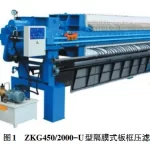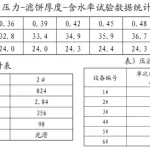Filter press trolley is one of the important components of the filter press, responsible for carrying the filter plate and realising the movement and positioning of the filter press. In the process of use, it is sometimes necessary to disassemble the filter press trolley for maintenance, repair or replacement of filter plates and other operations. This article will provide you with a detailed introduction to the disassembly steps of the filter press trolley to help you better understand how to disassemble the filter press trolley safely and effectively.
I. Preparations
Before dismantling the filter press trolley, the following preparations need to be made:
1. Confirm that the power supply has been disconnected: Before disassembling, you need to make sure that the power supply of the filter press has been disconnected to avoid accidents.
2. Prepare tools and materials: It is necessary to prepare suitable tools, such as screwdrivers, wrenches, etc., as well as necessary materials, such as lubricants, seals, etc.
3. Check the condition of the trolley: Before dismantling, you need to check the condition of the filter press trolley, such as whether there is any abnormal sound or vibration.
II. Disassembly steps
The following are the steps for disassembling the filter press trolley:
1. Loosen the fixing screws: find the fixing screws of the filter press trolley and loosen the screws with a screwdriver or a spanner. Be careful to loosen the screws gradually in a diagonal manner to avoid the trolley shifting.
2. Removing the locating pin: The locating pin is an important part that holds the trolley in place and needs to be removed. The locating pin is usually located at the bottom of the trolley and can be removed by hand or with a suitable tool.
3. Lift the trolley: After removing the locating pins and set screws, the trolley can be gently lifted to separate it from the main body of the filter press. Be careful to maintain balance and avoid tipping the cart or bumping into surrounding items.
4. Removing the guide bar: The guide bar is an important part of the operation of the trolley and needs to be removed. The guide bar is usually located on one side of the trolley and can be pulled out by hand or with a suitable tool.
5. Inspect and clean parts: During disassembly, parts need to be inspected for wear or damage and replaced or repaired in a timely manner. Parts need to be cleaned to avoid dirt or debris affecting their normal operation.
6. Placing the trolley: After dismantling is complete, the trolley can be placed in a dry, flat area for subsequent repair or maintenance.
III. Precautions
During disassembly, the following should be noted:
1. Safety first: pay attention to safety when disassembling, do not use unsuitable tools or excessive force, so as not to cause personnel injury or equipment damage.
2. Disassembly in order: Disassembly should be carried out in a certain order, first loosening the fixing screws and removing the locating pins, then lifting the trolley and disassembling the guide bar. Don't disassemble or pull the parts hard to avoid damages or accidents.
3. Inspection and maintenance of parts: During dismantling, check the condition and wear and tear of the parts and replace or repair them in a timely manner. It is necessary to clean the parts and apply the right amount of lubricant to maintain their normal operation and prolong their service life.
4. Observe the operating procedures: During disassembly, observe the operating procedures and precautions, and do not change the circuitry or use unsuitable tools at will. In case of doubt or difficulty, refer to the instruction manual or consult a professional technician.
IV. Common problems and solutions
During the disassembly process, some common problems and solutions may be encountered as follows:
1. Loose or detached screws: If the screws are found to be loose or detached, they need to be retightened or replaced. Meanwhile, pay attention to whether the specification and length of the screws meet the requirements.
2. Positioning pin can not be pulled out: If the positioning pin can not be pulled out, you can gently knock the peripheral parts or use appropriate tools to pull out. Be careful not to use too much force so as not to damage the parts.
3. Tipping or bumping of trolley: When lifting the trolley, if it is inadvertently tipped over or bumps into surrounding objects, damage to equipment or injury to personnel may result. Therefore, handle with care and maintain balance.
4. Stuck or loose guide bar: If the guide bar is stuck or loose, it is necessary to check its installation and adjust or replace the parts. At the same time in the process of use should be regularly lubricated to keep it running smoothly.
 Plate and frame chamber diaphragm filter presses
Plate and frame chamber diaphragm filter presses






